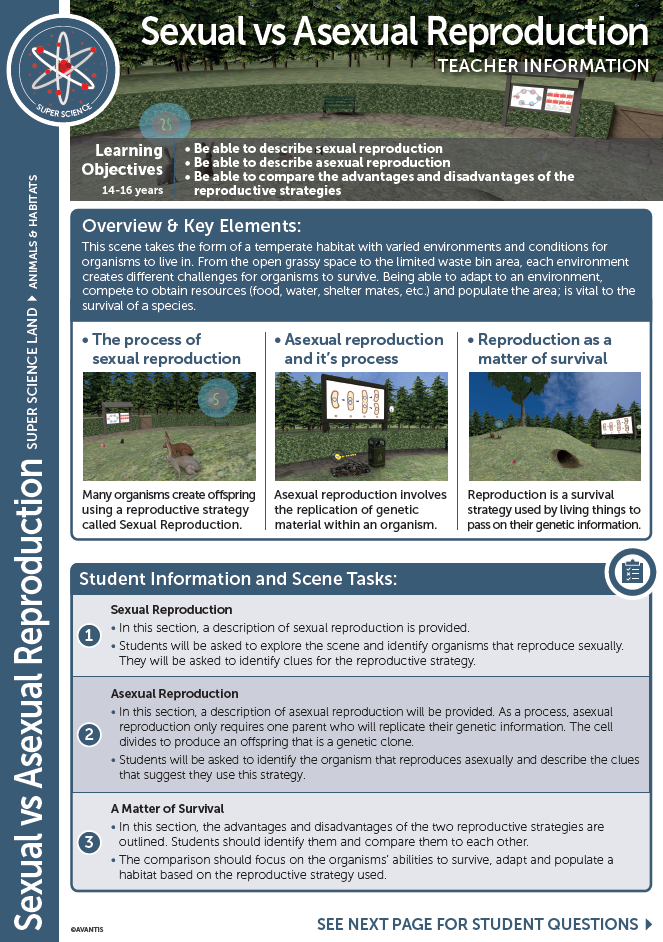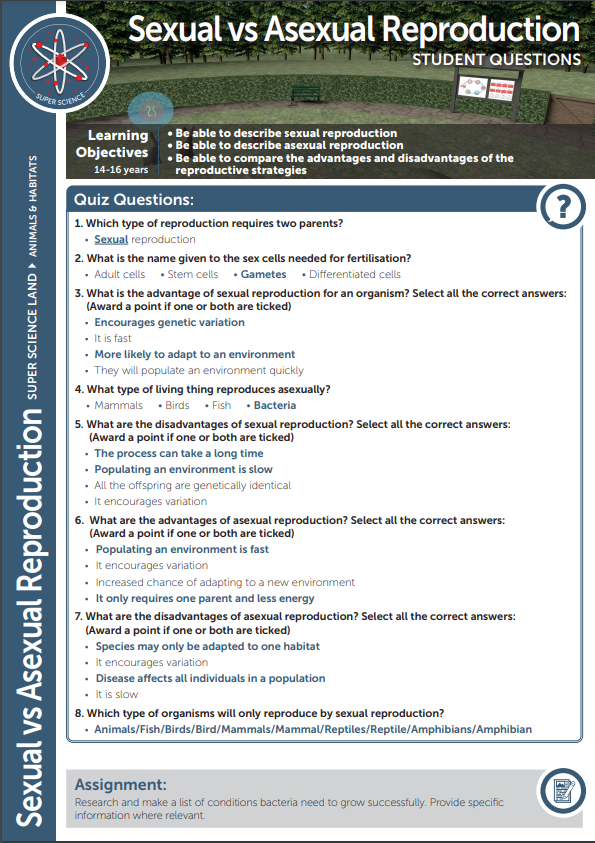 Loading...
Loading...
Initial language selection is based on your web browser preferences.
# Learning objectives 1: Be able to describe sexual reproduction{.info} 2: Be able to describe asexual reproduction{.info} 3: Be able to compare the advantages and disadvantages of the reproductive strategies{.info} # Sexual Reproduction{.objective .objective1} In this section, a description of sexual reproduction will be outlined as a process requiring two parents who provide gametes. The process of fertilisation needs to take place for the sex cells’ nuclei to fuse and form a new set of chromosomes, and for the new offspring to develop. A process carried out predominantly by animals, some plants and fungi. # Asexual Reproduction{.objective .objective2} In this section, a description of asexual reproduction will be provided. As a process, asexual reproduction only requires one parent, who replicate their genetic information, causing the cell to divide to produce an offspring that is a genetic clone. # A Matter of Survival{.objective .objective3} In this section, the advantages and disadvantages of the two reproductive strategies are outlined. Students should identify them and compare them to each other. The comparison should focus on the organisms’ abilities to survive, adapt and populate a habitat based on the reproductive strategy used. # Teacher Resources ### Download Teacher Notes [](https://avnfs.com/ljNQDDqVuAsR3JGssBD2XwS5-U6JO6QgvIlZMRYbgcA?size=2012108&type=application%2Fpdf&name=Sexual+vs+Asexual+Reproduction+Teacher+Notes+1.pdf) ### Student Quiz Answers Document [](https://data.avncloud.com/activities/798486/files/Sexual%20vs+Asexual+Reproduction+Teacher+Notes+2.pdf?date=1681829496&size=1258637&md5=254c2b13e9ae73ece9372a972e672df8) ### Download Student Quiz Document [](https://data.avncloud.com/activities/798487/files/Sexual%20vs+Asexual+Reproduction+Teacher+Notes+3.pdf?date=1681829551&size=94415&md5=c19dc8b203404a0600b2e3dd94d69ba4)